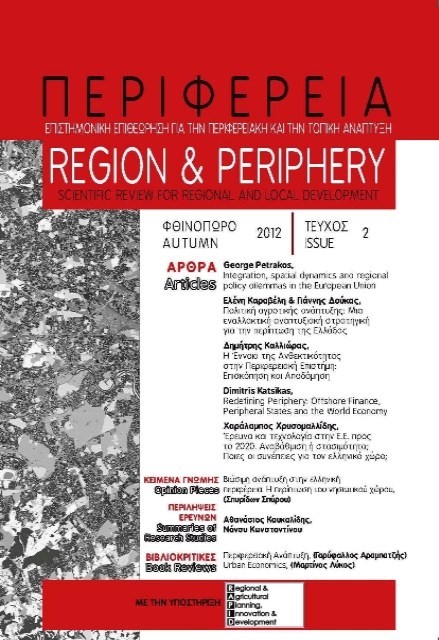Integration, spatial dynamics and regional policy dilemmas in the European Union

Abstract
This paper presents a critical account of the process of integration and its implications for the future of European Union. It analyses the type, strength and direction of trade and factor fl ows a mong places and the emerging geography of development in Europe. It argues that integration is not a space neutral process, as its main drivers are characterized by spatial selectivity and diverging performances, generating an overall unfavorable environment for laggingbehind regions in the EU. The paper also discusses the current regional policy dilemmas in the EU, arguing that top-down uniformity in policy choices and a strict framework of policy directives should be avoided, as different places may have to choose a different mix of regional policy that will correspond better to their needs. The paper also examines why the persistently underperforming regions in Europe cannot learn and benefi t from best-case examples and the success stories of other regions. Although factors affecting economic potential are usually different in advanced and less advanced regions, cohesion policies attempt to solve the underdevelopment problems of the lagging regions, only informed by the experience of the successful ones. The paper concludes that regional policy has to change in important ways. The new territorial approach requires policy to become more fl exible and more adaptive to local and regional needs. This means that uniformity in policy priorities and mix should be avoided and the proposed ‘pan-European approach’ should leave enough room for bottom up and place based approaches, as the experience shows that no single path or an a priori mix of policy tools exists for every place.
Article Details
- How to Cite
-
Πετράκος Γ. (2012). Integration, spatial dynamics and regional policy dilemmas in the European Union. Perifereia | Regional Integration: Politics, Economics, Governance, 2(2), 7–20. https://doi.org/10.12681/rp.18596
- Section
- Research Articles

This work is licensed under a Creative Commons Attribution-NonCommercial 4.0 International License.
Authors who publish with this journal agree to the following terms:
· Authors retain copyright and grant the journal right of first publication with the work simultaneously licensed under a Creative Commons Attribution Non-Commercial License that allows others to share the work with an acknowledgement of the work's authorship and initial publication in this journal.
· Authors are able to enter into separate, additional contractual arrangements for the non-exclusive distribution of the journal's published version of the work (e.g. post it to an institutional repository or publish it in a book), with an acknowledgement of its initial publication in this journal.
· Authors are permitted and encouraged to post their work online (preferably in institutional repositories or on their website) prior to and during the submission process, as it can lead to productive exchanges, as well as earlier and greater citation of published work.


